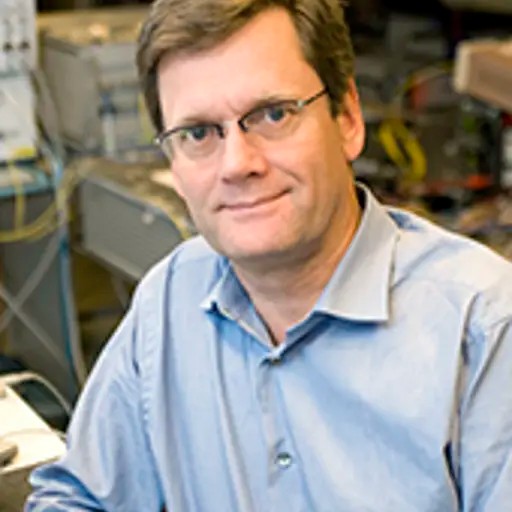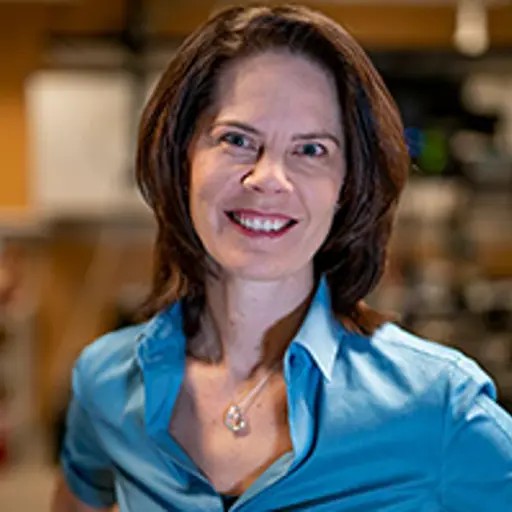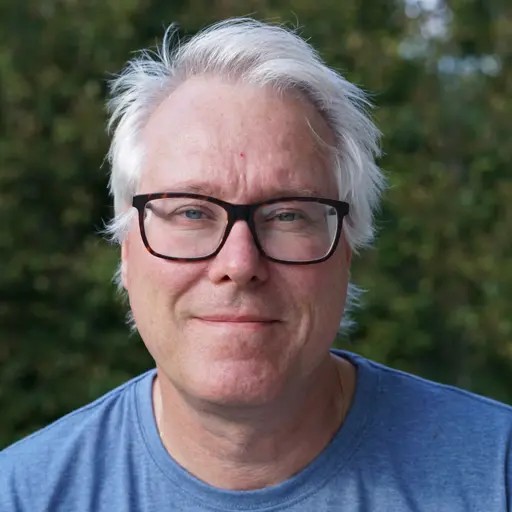
Photonics is the science and technology of light. Light is fast, efficient, and clean. Light can interact strongly with biomolecules, for instance in medical detection and treatment, and light propagation can be controlled with extreme spatial precision.
Among the areas where photonics has a particularly large impact is communication. Driven by the development of the Internet, fiber optical communication develops rapidly towards higher capacity and is increasingly used at shorter distances, like in datacenters and high-performance computing systems.
Photonics Laboratory sheds light...
We conduct application-oriented research on optoelectronic materials and devices, ultrafast optics, and fiber optical communication. We also strongly engage in teaching photonics, mainly within the Master program Wireless, Photonics and Space Engineering, as well as in the Physics bachelor course Optics.
...on new light sources and new ways to send optical signals
With PhD students and postdocs, we are about 35 members, including eight senior members. Optical communication is a major area of research, with efforts on system, circuit, and device technologies for applications extending from long-haul transmission to short-reach interconnects. Photonics Laboratory hosts the Fiber Optical Communications Research Center (FORCE) at Chalmers, with some 50 members from the MC2, E2 and CSE departments.
Our research is made possible by grants from the European Research Council, the European H2020 program, the Swedish Research Council, the Swedish Foundation for Strategic Research, the Swedish Innovation Agency, the Swedish Energy Agency, and the Knut and Alice Wallenberg Foundation.
Research groups at Photonics
Fiber Optical Communication
Coherent transmission systems and parametric processing and amplification.
Group leaders: Peter Andrekson and Magnus Karlsson
Wide bandgap optoelectronics
We develop ultraviolet and visible light emitters with a focus on microcavity lasers and thin-film flip-chip LEDs.
Group leader: Åsa Haglund
Group webpage (Wide bandgap optoelectronics)
Ultrafast Photonics
Frequency comb technologies and silicon photonics integration.
Group leader: Victor Torres-Company
Research Areas at Photonics
Coherent Fiber Optic Transmission Systems
This research is organized in three large projects: spatial division multiplexing (SDM), energy-efficient transmission, and novel transmission schemes. The SDM project aims at finding efficient transmission schemes over parallel optical channels. The energy efficiency project involves close collaborations with the E2 and CSE departments for a holistic view of the energy consumption of optical links. The novel transmission scheme project includes demonstrations of frequency comb-based transmission with record spectral efficiency of 11.5 bit/s/Hz.
Parametric Processing and Amplification
This research utilizes the unique features of phase-sensitive optical amplifiers - producing nearly no excess noise and the ability to mitigate transmission fiber nonlinearities. Significant reach extension in long-haul fiber transmission was demonstrated using QPSK and QAM signals. Additional benefits of distributed Raman amplification, few-mode fibers, and processing in highly nonlinear integrated waveguides are investigated. Very high sensitivity receivers for free-space optical communication were demonstrated.
Ultrafast Photonics
This research focuses on laser frequency comb technology for applications in fiber-optic communication systems and ultrafast metrology. Record transmission reach using an integrated frequency comb generator as the multi-wavelength light source was recently demonstrated. The technology for hybrid integration with silicon photonics integrated circuits is also being developed.
VCSELs and Optical Interconnects
Here, vertical-cavity surface-emitting lasers (VCSELs) and associated technologies for applications in datacom and life science are being developed. VCSEL-based transmitters with record speed and efficiency were demonstrated. Dense arrays of high-speed VCSELs enabled record capacity multicore fiber interconnects. Single-channel speed above 100 Gbps was demonstrated by using multilevel modulation. Heterogeneous integration of hybrid vertical-cavity lasers on silicon demonstrated the potential of such lasers as efficient light sources for silicon photonic integrated circuits.
Wide Bandgap Optoelectronics
This research focuses on light-emitters from wide-bandgap materials for ultraviolet and visible wavelengths. Devices such as resonant-cavity light-emitting diodes and microcavity lasers, from both planar and nanostructured materials are investigated for applications in solid-state lighting, visible light communication and medical diagnosis. Novel fabrication techniques for GaN-based VCSELs, thin-film LEDs, and membrane based emitters are being developed.
Epitaxy of Novel Bismuth-Containing Materials
The research focuses on epitaxial growth of high quality dilute-bismides for lasers and bismuth-telluride topological insulator (TI) for spintronic device applications. The first long-wavelength GaAsBi quantum well lasers operating at room temperature were demonstrated, as well as spin injection from GaAs into 3D Bi2Te3 TIs.
Head of laboratory and senior researchers
Senior researchers
Publications in Chalmers Research
We continually document our research in various types of publications, which are registered in Chalmers Research. Follow this link to see recent publication lists




